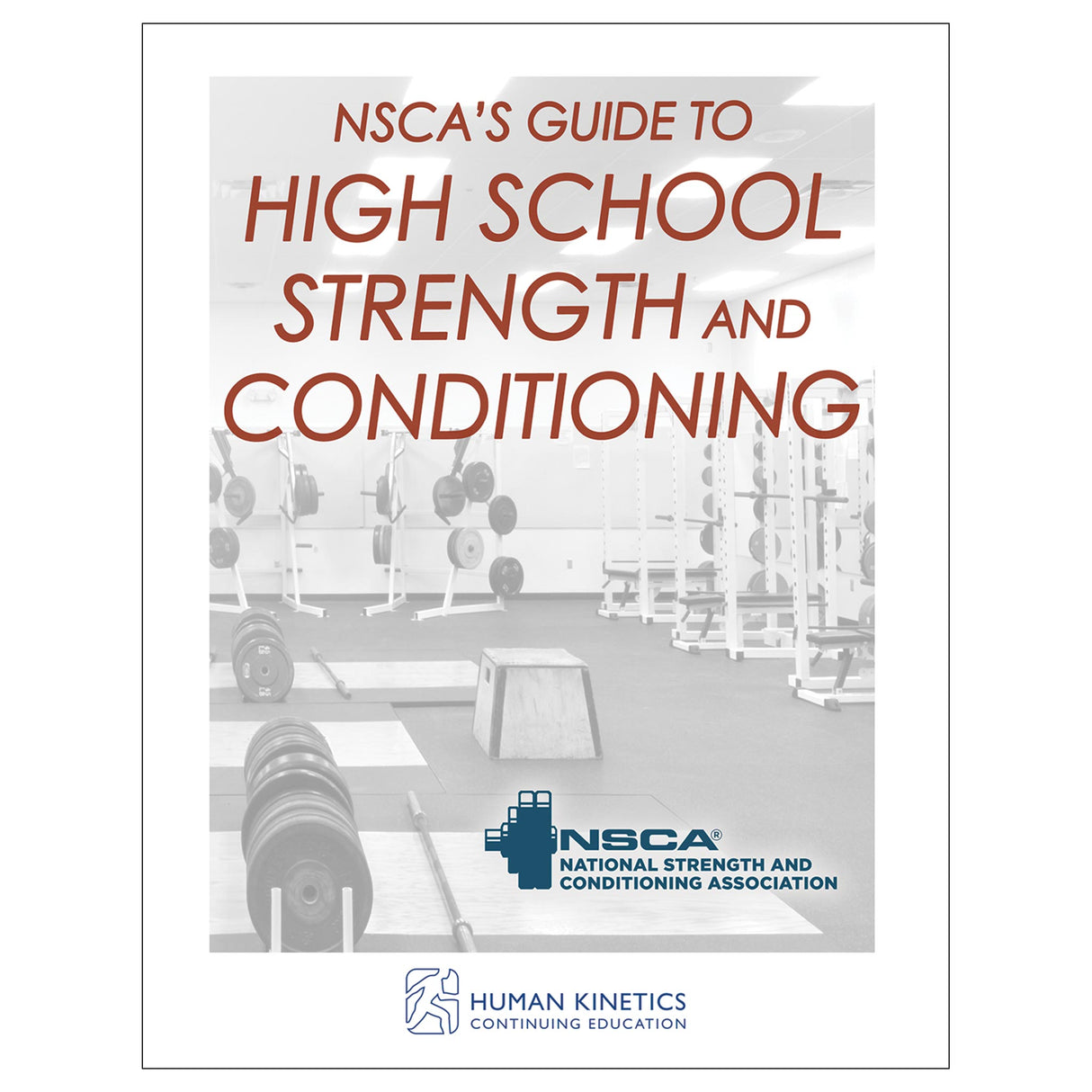NSCA's Guide to High School Strength and Conditioning Online CE Course With Ebook
Author: Human Kinetics
$81.00 USD
Human Kinetics strongly recommends that you complete your exam within the calendar year of your date of purchase to ensure approved credits do not expire for your organization.
- NSCA’s Guide to High School Strength and Conditioning ebook
- Online study guide
- Online continuing education exam
This course provides insights into the benefits of a strength and conditioning program at the high school level and offers advice for the implementation of such a program. Loaded with practical information, you will learn the variables to consider when designing a resistance or cardiovascular training program and 13 detailed protocols for conducting movement and performance assessments. Detailed descriptions and photos help you properly teach technique for
- 28 resistance training exercises,
- 10 bodyweight exercises,
- 12 anatomical core exercises,
- 11 static and dynamic stretching exercises,
- 12 plyometric exercises,
- 10 speed and agility drills, and
- 5 cardio machines.
Once you complete the course and pass the exam, you can print a certificate for continuing education credits.
Learning Objectives
- Explain the expansion of resistance training programs in the high school setting and the need for certified and qualified strength and conditioning professionals.
- Identify the various roles a strength and conditioning professional may fill in the high school setting and identify the key responsibilities when working with schools, students, parents, coaches, and teams.
- List the key traits necessary for the success of a strength and conditioning professional in the high school setting.
- Explain the importance of strategic planning when advocating for a full-time strength and conditioning position, including identification of stakeholders, collection of data, and identification of funding resources.
- Understand the purpose of assessing student-athletes and know the setup, equipment, and protocols involved.
- Demonstrate resistance training techniques and integrate best practices into the high school physical education curriculum to facilitate student-athletes’ lifelong personal fitness initiatives.
- Apply state and national standards for high school student-athletes.
- Design an instructional plan that is built around the class schedules and the training experience level of the students.
- Apply professional recommendations for training facility layout and maintenance, including equipment needs and spacing, weight room safety guidelines, and maintenance, cleaning, and emergency procedures.
- Define key terms in exercise science.
- Identify safe and responsible exercise choices for the age, skill, experience, goals, and fitness level of student-athletes and be able to provide instruction on these movements in a weight room with student-athletes.
- Understand the importance of safety in lifting techniques.
- Differentiate training exercises for the lower body, upper body, total body, and anatomical core and know modifications for these exercises.
Audience
Strength and conditioning professionals, sport coaches, and physical education teachers who work with high school student-athletes.Rick Howard, Patrick McHenry, and Mike Nitka
Introduction. Strength and Conditioning-Related Professionals in the High School Setting
Edwin C. Jones and Shawn L. Jenkins
Chapter 1. Curriculum and Class Structure and Guidelines
Anthony S. Smith and Bruce R. Harbach
Chapter 2. Class Scheduling, Planning, and Assessments
Gary S. McChalicher and Brandon Peifer
Chapter 3. Strength and Conditioning-Related Resources for Teachers and Professionals
Patrick Mediate and Mike Nitka
Chapter 4. Resistance Training Exercises
Scott Sahli
Chapter 5. Bodyweight Exercises
Jim Davis
Chapter 6. Core Exercises
Joe Lopez
Chapter 7. Warm-Up
Darnell K. Clark
Chapter 8. Resistance Training
Shana McKeever and Rick Howard
Chapter 9. Plyometric Training
Samuel Melendrez
Chapter 10. Speed and Agility Training
Phil Tran and Ray Karvis
Chapter 11. Individual and Group Activities
Daniel Flahie
Appendix. NSCA Strength and Conditioning Professional Standards and Guidelines





